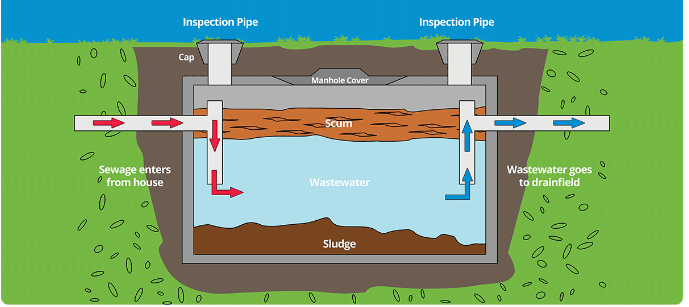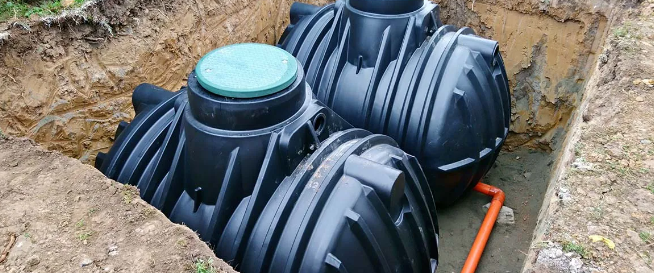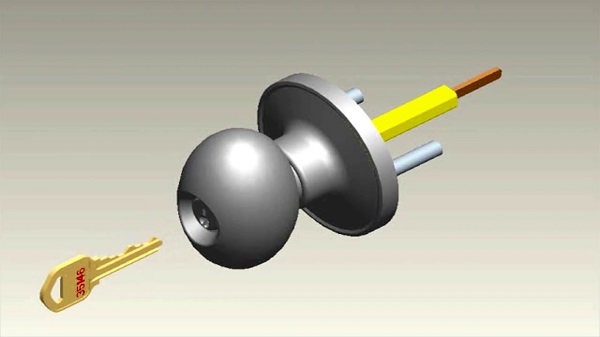Septic tanks play a vital role in managing sewage and wastewater from households that aren’t connected to the mains sewer system. These tanks, through their design and operation, ensure the safe containment and gradual breakdown of organic matter, contributing significantly to environmental and public health protection. They come in two primary types, each serving distinct functions crucial for the proper treatment and disposal of household waste.

Septic Tank with Soakaway
These tanks are typically constructed from a variety of materials, including brick, concrete, fibreglass, or polyethylene. They feature multiple chambers, along with T pipes or baffles, designed to settle and retain waste solids from the property effectively.
Generally, these tanks only require emptying when solid levels reach a certain point. The liquid portion then drains into a soakaway or drainage field, where naturally occurring bacteria treat the waste effluent. However, for this process to function effectively, the septic tank must operate efficiently, and the subsoil must have adequate drainage in order to prevent potential issues.
Over time, fine suspended solids and bacteria biomass can accumulate in the drainage field, gradually diminishing its efficiency. This can lead to backups in the drainage system, causing effluent to surface or back up into the house unexpectedly.
Factors such as increased water volume from modern homes and the presence of chemicals and detergents in waste can expedite this progression, significantly inhibiting both tank settlement and biological processes in the drainage field. In light of current environmental and building standards, an area once suitable for a septic tank drainfield may no longer adequately comply.
For those interested in learning about sewer pipe lining Wolverhampton, consider contacting a specialist such as www.wilkinson-env.co.uk/sewer-repairs-drain-lining-concrete-cutting/drain-repairs/wolverhampton/.

Septic Tank without Soakaway
This was for cases where a septic tank discharges directly into surface-water bodies such as ditches, streams, rivers, lakes, or ponds, as it no longer met Environment Agency requirements. Upgrading these systems ensures compliance with environmental regulations and helps to maintain water quality standards.



